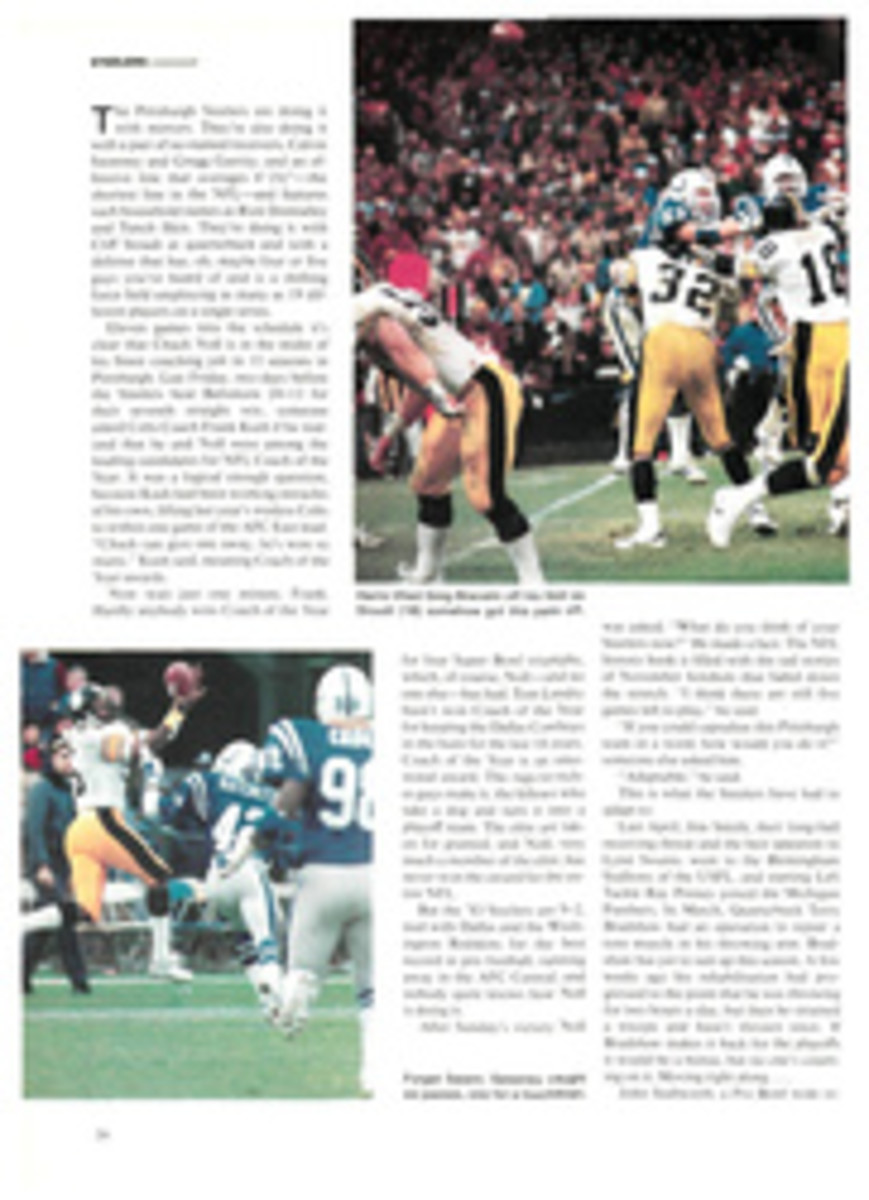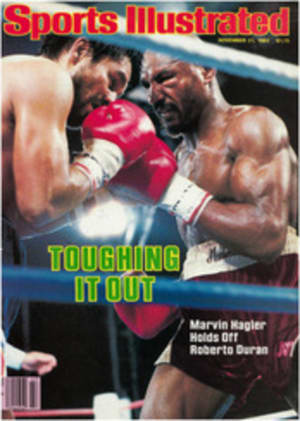
Thundering into a new era
Just as the fastest offshore powerboat race in history was being completed last Thursday, the fastest offshore powerboat in history was about five miles from the finish line, going around in circles. At the helm, Al Copeland, owner of the Popeyes fried chicken chain, was twisting a steering wheel that might as well have been connected to a video game. Ah, the irony of it. His $600,000 investment—named Popeyes, of course—wasn't getting him any closer to the finish, let alone victory in this race, the second in a three-race series for the Michelob Light/Key West World Championship, the final and biggest event of the offshore powerboat year. And an impressive speed record—103.29 mph—was going to Arneson Special a boat Copeland knew his Popeyes could beat at about three-fourths throttle. If only the steering hadn't broken.
As it turned out, three boats broke the record of 98.18 mph, which had been set in the first race, two days earlier. The speeds were due largely to an unusually calm spell in the Straits of Florida. Popeyes had won that first race but the victory wasn't recognized by the Union of International Motorboating, the world governing body for the sport. Popeyes is a "superboat," the first to take advantage of new Class I rules of the American Power Boat Association—rules not yet accepted by the UIM. The old rules limited a boat's length to 45 feet and its engines to a total of 1,000 cubic inches; the new rules set no limits. The APBA has jurisdiction only in the U.S., and because this was a world championship, the old rules were in force.
Popeyes is an eight-ton, 50-foot-long Cougar catamaran. It's 12 feet longer than most of the other Cougar cats that have been dominating offshore competition, and it has twice as many engines as the others: four 700-horsepower Mercurys with 500-cubic-inch Chevrolet blocks. The boat is spectacularly fast and smooth and, not incidentally, spectacularly expensive.
Building such a craft seemed to Copeland a logical thing to do. Last year he sometimes brought three boats to a race—a monohull, or deep V, for heavy seas; a 38-foot catamaran for moderate seas; and a quick, 30-foot cat for flat water—and chose among them the morning of the race. Copeland figured that one superboat would be fastest in any kind of water. What's the difference between one $600,000 boat and three $200,000 ones, except a couple of trailers? Besides, a rule change has made it more attractive to race one boat all season.
Popeyes was the only superboat in four of the APBA circuit's nine events this year, and it won two of them. But at Key West a rival appeared—far less spectacular, but still super. It was a three-engined, 46-foot Cougar deep V named MerCruiser Special. Its owner and driver, George Morales, knew when he ordered the deep V that it would be no match for Popeyes in calm water, but he figured it would be more versatile.
The presence of the two superboats, especially Popeyes, because it was the first, and so mercilessly fast, stirred things up among the other owners by forcing their hands: Either they had to spend more money, or they'd lose. "Everybody's mad at us now, but hey, they had the same shot I did," says Copeland. "You either get with the program or get off the program. You can't harness development."
"Bull," counters one of the less wealthy competitors in the anti-super-boat camp. "Building a boat that's merely longer and heavier and then adding more engines isn't development, it's shopping. There's no point to superboats. They're monstrosities."
Popeyes is both beautiful and awesome-looking. Up on its trailer it's a spectacular edifice—even with Popeye's cheeky mug painted on the hull. From the cockpit its bow goes on like a Navy destroyer's, and eight big exhaust pipes stick out astern like chrome cannons. When throttle-man and engineer Bill Sirois shoves the four throttles forward, the bow drops and the tachometer needles swing to 6,200 rpm; it's enough to make a horsepower junkie shudder with pleasure. The roar from the engines is felt more than heard, and even as the tiny Keys speed by at 120 miles an hour, the sensation is not so much of speed as of power. Two thousand eight hundred horsepower.
After handily winning the first 96-mile race, on Nov. 8, Popeyes shot out to an early lead in the second over the same course, starting more or less in the heart of Key West. Popeyes had such superior speed that Sirois kept the throttles backed off to 5,000 rpm. Copeland casually checked over his shoulder to see how far back the field was, but then a fitting fractured and steering was lost, allowing Arneson Special, driven by Tony Garcia, to snatch the speed record.
Despite a DNF, Popeyes could still win the world championship—in the APBA's eyes, at least—if it finished first in the 208-mile finale on Saturday—five laps over a longer course. On the first leg, a seven-mile run to Sand Key, the boats were pounding over the chop, and Popeyes and Arneson Special were neck and neck at the turn, chased by last year's winner, Michelob Light, and MerCruiser Special. By the time they were 35 miles into the race, the waves were up to six feet, too much for Michelob Light, which ended up with a trim tab broken and a hole in the hull. MerCruiser Special's sharp bow sliced through the seas exactly as a deep V is supposed to and passed Popeyes as the two superboats left Arneson Special behind.
After three laps Popeyes trailed by 13 seconds, and it wasn't clear whether Sirois was merely biding his time or the sea was indeed equalizing things. But suddenly that question seemed to be answered as Popeyes closed the gap and pulled ahead. This didn't last long; an internal shaft snapped in one of the engines, and it was no contest from that moment on. Popeyes continued with three engines and held on to second place, but a second engine blew as the final lap began, forcing Copeland to turn the big cat around and chug home—defeated. Arneson Special finished eight minutes behind MerCruiser Special, which averaged 90.97 mph. But when the points were tallied from all three races, Arneson Special, not MerCruiser Special, was rated the UIM world champion because it's not a superboat.
But if anything proved that superboats are the wave of the future—and that big boats are becoming more important than big titles—it was Morales saying he had a 46-foot Cougar cat on order and next year would bring two superboats to the races despite the disadvantage. And who knows? Maybe Copeland will be ordering his own super deep V.
TWO PHOTOS
Garcia's non-superboat, Arneson Special, ended up with the title and speed mark.
PHOTO
MerCruiser Special won the event, not the title.
PHOTO
Four engines gave Popeyes dazzling speed, but two of them failed in the final race.

